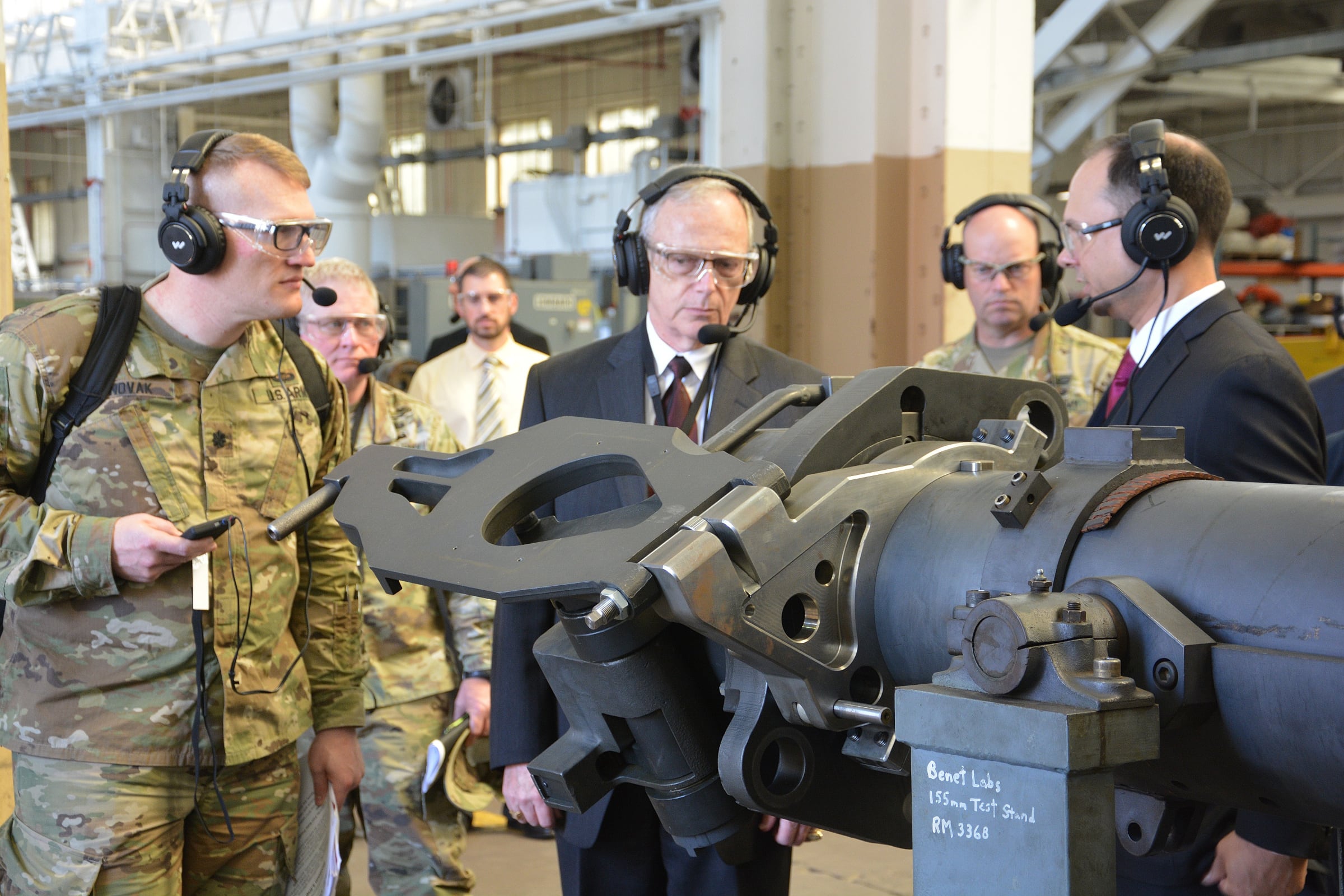WASHINGTON — As the U.S. Army begins to replace its existing fleet with fresh platforms that will form a force capable of countering adversaries across multiple domains and theaters, the acquisition side of the house will face tough choices.
Defense News posed a variety of questions to Bruce Jette — Army acquisition chief — ahead of the Association of the U.S. Army’s annual conference to see what he’s thinking about when it comes to the evolution of the service’s procurement approach, including its relationship with Army Futures Command, which is tasked with modernizing the service.
A year ago you were developing a framework for how you, as the assistant secretary of the Army for acquisition, logistics and technology, would interface with Army Futures Command. How has the framework evolved?
The framework for interfacing with Army Futures Command has evolved as we’ve identified unique, shared or overlapping responsibilities among stakeholders as well as sole responsibilities for each stakeholder.
The major muscle movements are: AFC has lead responsibility in the space between concepts creation and requirements definition, bringing “unity of command” to modernization organizations previously scattered across the Army. Unique to AFC is the responsibility to create concepts for how the Army will fight, and creation of the initial materiel requirement. AFC transitions to a critical supporting role after the concept and requirement refinement milestones, and is essential in collaborative efforts during acquisition activities leading to production. There are overlapping roles of capabilities to requirements throughout the development and procurement processes.
The office of the assistant secretary of the Army for acquisition, logistics and technology, or ASA(ALT), understands the concept and takes the requirement from AFC and carries them through the engineering, development and manufacturing phase, design and building, and developmental testing processes. These materiel solutions are then moved into production, operational testing and fielding employment to ensure the Army materially delivers the most value to soldiers at the speed of relevance. AMC begins its overlapping supporting role in the acquisition process during the fielding activity.
As the service begins the fiscal 2022-2026 program objective memorandum cycle, how is the acquisition side of the house contributing to the analysis needed to determine things like initial production quantities for systems that will begin initial fielding and beyond in this cycle? What tough decisions will the Army face?
During requirements development, AFC, the deputy chief of staff, G-8 and ASA(ALT) partner to assess the affordability and feasibility of various production quantities and approaches to meet Army capability needs. While industrial factors may put limits on production speed or capacity, we are typically limited by resources and must strike a balance between ideal production quantities and rates, and the need to balance all of the Army’s capability portfolios to ensure holistic modernization.
Tough decisions are required, as evidenced by the Army’s “night court” reviews to re-validate needs or reallocate resources to modernization priorities. We have not, at this time, identified any additional early system retirements, but that question will be a reoccurring assessment as we move forward.
A few program executive offices have gone through some restructuring and transformation this year, most recently PEO Missiles and Space. Can we expect more major organizational or strategic changes or additions within the PEOs in the short term to better align with priorities and Army doctrine?
Recently our program executive offices underwent directed “reorganization and reduction.” Throughout the process, I was reminded of the quote by the Greek philosopher, Heraclitus, that “change is the only constant in life.” Continual improvement and self-reflection is good for any organization.
My assessment is that our PEOs are organized and optimized for modernization, and I expect no more major organizational or strategic changes unless the Army modernization priorities significantly change, which I also do not expect.
How are you looking at the acquisition and management of artificial intelligence and other cutting-edge technologies within the force?
The Army stood up the Artificial Intelligence Task Force, or AITF, based at Carnegie Mellon University to focus on facilitating prototyping and the transition of best-of-breed AI technologies in support of the Army’s modernization priorities. Current AITF initiatives include predictive maintenance for the UH-60 helicopter and Bradley Infantry Fighting Vehicle; AI-aides threat recognition for the next-generation combat vehicle; and sensor consolidation for long-range precision fires. AI will be applied first to known systems to minimize variables and maximize potential at low-dollar investment without far-reaching, unachievable goals.
Long term, the Army is standing up an Army AI Innovation Institute to serve as the focal point and accelerator for Army AI basic and applied research, and to facilitate collaborative research with academia, industry and other government organizations. Further, AFC has appointed Brig. Gen. Matt Easley as the director of Army artificial intelligence with oversight of AI through advanced technology development. AI solutions touch each of the Army modernization priorities to include next-generation combat vehicles, future vertical lift, long-range precision fires, soldier lethality, and the Army network for both offensive and defensive cyber operations.
Jen Judson is an award-winning journalist covering land warfare for Defense News. She has also worked for Politico and Inside Defense. She holds a Master of Science degree in journalism from Boston University and a Bachelor of Arts degree from Kenyon College.








